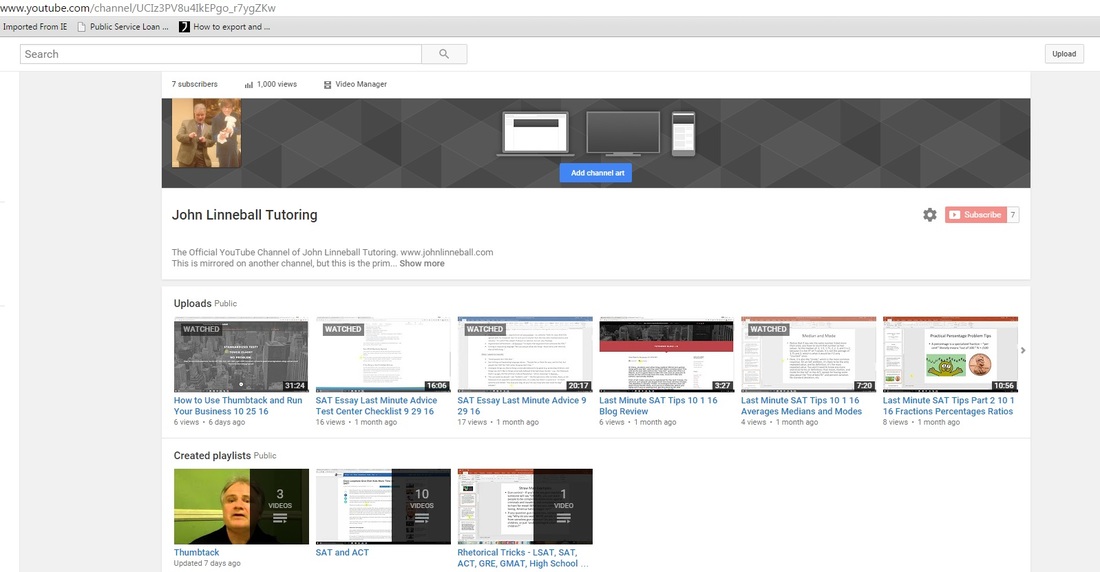SPECIAL NEW CUSTOMER OFFER: Free 30-minute diagnostic session. Limited spots. 415-623-4251.
Don't cram-study and don't panic! Cram-studying doesn't work (see my blog entries from 2014), and panicking never helps anyone. I strongly suggest you spend an hour or two working on practice problems, and spend another hour doing an SAT practice essay under timed conditions (so spend 50 minutes doing the essay and 10 minutes reviewing it).
Then stop. Make sure you have your ID and test admission ticket handy (you can't take the test without them), and that you have plenty of time to get to the test site. Make sure you can get there using transit or walking, in case a car is not available to you (Uber or Lyft may also be an option for you). See my YouTube channel for more test-taking tips. See it here! |
Author: John Linneball Who did you think? ;-)I'm the proprietor and only tutor for this business; that's why I named it after me. Archives
June 2024
Categories |

 RSS Feed
RSS Feed